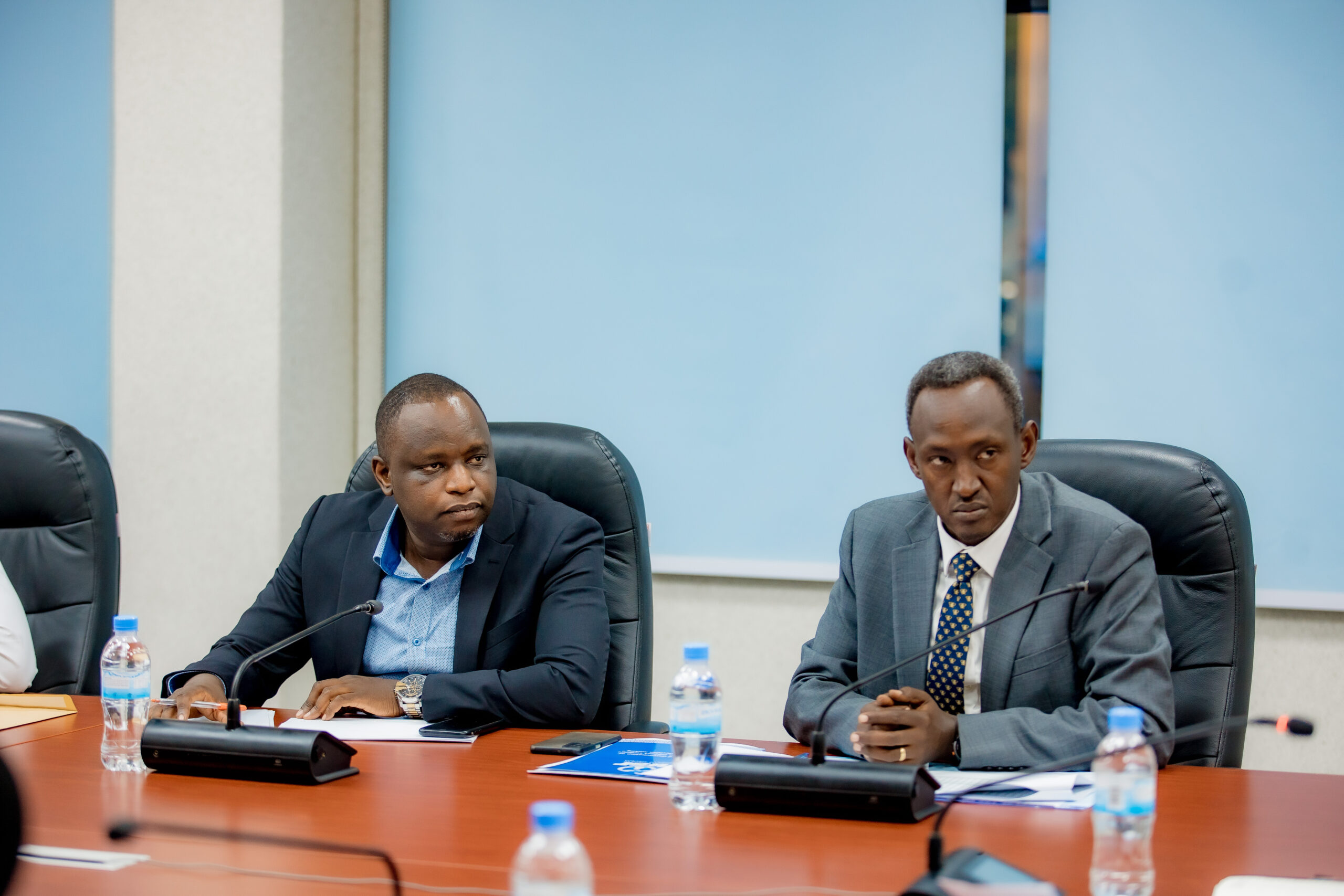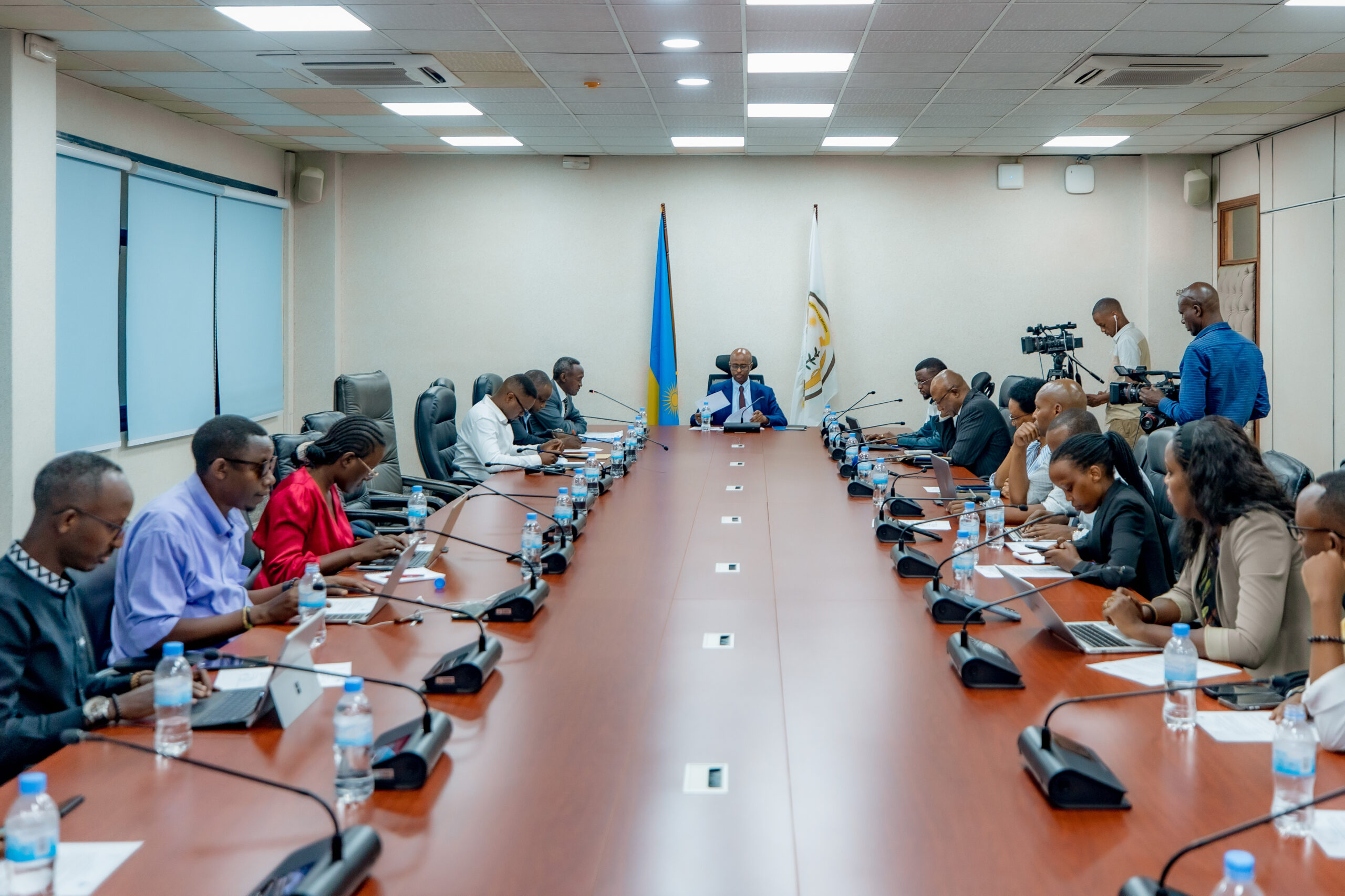
NISR DG Murenzi announcing Q2 results together with the Minister of Finance, Yusuf Murangwa, on Monday.
Rwanda’s economy will continue to be resilient for the remaining part of the year, despite persistent global shocks and external crises which continue to affect global trade and impact economies.
Rwanda’s Gross Domestic Product (GDP) for the Second Quarter (Q2) of 2024, at current market prices was estimated at Rwf 4,515 billion, up from Rwf 3,972 billion in Q2 of 2023, according to the figures released by the National Institute of Statistics of Rwanda (NISR) on Monday.
Services contributed 47% to GDP, agriculture contributed 25% while industry contributed 21%. Net direct taxes accounted for 7%.
NISR said that Rwanda’s economy is expected to maintain its positive trajectory, with a projected growth rate of 6.6% in 2024, following a growth of 8.2% registered in 2023. This growth will be supported by strong performances in the service and industrial sectors, alongside a recovery in the agriculture sector.
GDP increased by 9.8% in Q2 of 2024, following the growth of 9.7% in Q1 of 2024. The GDP growth by major sectors showed a positive trajectory, with figures showing that Agriculture increased by 7% and Industry increased by 15% while Services increased by 10%.

NISR’s Murenzi (right) said the best performing sectors are expected to continue improving.
Announcing the results, Ivan Murenzi, Director General NISR, said that the growth registered in the last four quarters (July 2023 to June 2024) have resulted in 9.3% average growth for the fiscal year 2023-24.
“The agriculture sector saw an overall growth of 7%, with food crop production increasing by 8%, driven by a strong harvest during season A of 2024. However, export crop production declined by 6% compared to Q2 2023,” the NISR Head said.
“The industrial sector experienced an overall growth of 15%, primarily driven by an 18% increase in construction activities and a 17% rise in manufacturing. However, mining and quarrying saw a 2% decline compared to Q2 2023, with notable reductions in exports of Coltan, (down 8%) and Cassiterite (down 9%),”
Manufacturing growth was bolstered by an 18% rise in food processing, a 28% increase in the production of textiles, clothing, and leather, a 29% rise in metal products, machinery, and equipment manufacturing, and a 20% growth in the production of chemicals, rubber, and plastic products.
The services sector recorded an overall growth of 10%. Within the sector, wholesale and retail trade expanded by 10%, while transport activities grew by 9%, driven by a 25% increase in air transport and a 5% rise in land transport.
Other notable service sector growth includes a 20% increase in hotels and restaurants, a 10% rise in financial services, and a 33% growth in information and communication services.
 In terms of Expenditure GDP in Q2 2024, numbers show that private final consumption was 65 percent of GDP, government consumption was 19 percent, and gross capital formation was 30 percent. Total final consumption expenditure increased
In terms of Expenditure GDP in Q2 2024, numbers show that private final consumption was 65 percent of GDP, government consumption was 19 percent, and gross capital formation was 30 percent. Total final consumption expenditure increased
by 19 percent, exports increased by 14 percent, imports increased by 49 percent.
Responding to the Q2 performance, Yusuf Murangwa, Minister of Finance and Economic Planning (MINECOFIN), said that the results show a positive trajectory and continued recovery, despite persistent external shocks resulting from global crises and conflicts.
“What we see from the numbers is that the economy is good. We see how the agriculture sector grew by seven percent, industry by 15 percent, services by 10 percent and that is very good,” Minister Murangwa said.

Minister Murangwa said the GDP results show an optimistic trajectory.
“When we look at the details, for example, you look at manufacturing of goods and products, you see that it increased by 18 percent, which is very good,” he said, citing areas such as textile manufacturing which grew by 10 percent as well as wood processing, which grew by 28 percent and construction, increasing by 18 percent, which are all positives.
“That shows an economy whose fundamentals are working,” Minister Murangwa said, adding that from the numbers he sees a good and promising picture, pointing out that the government anticipates continued improved performance in the said sectors.

